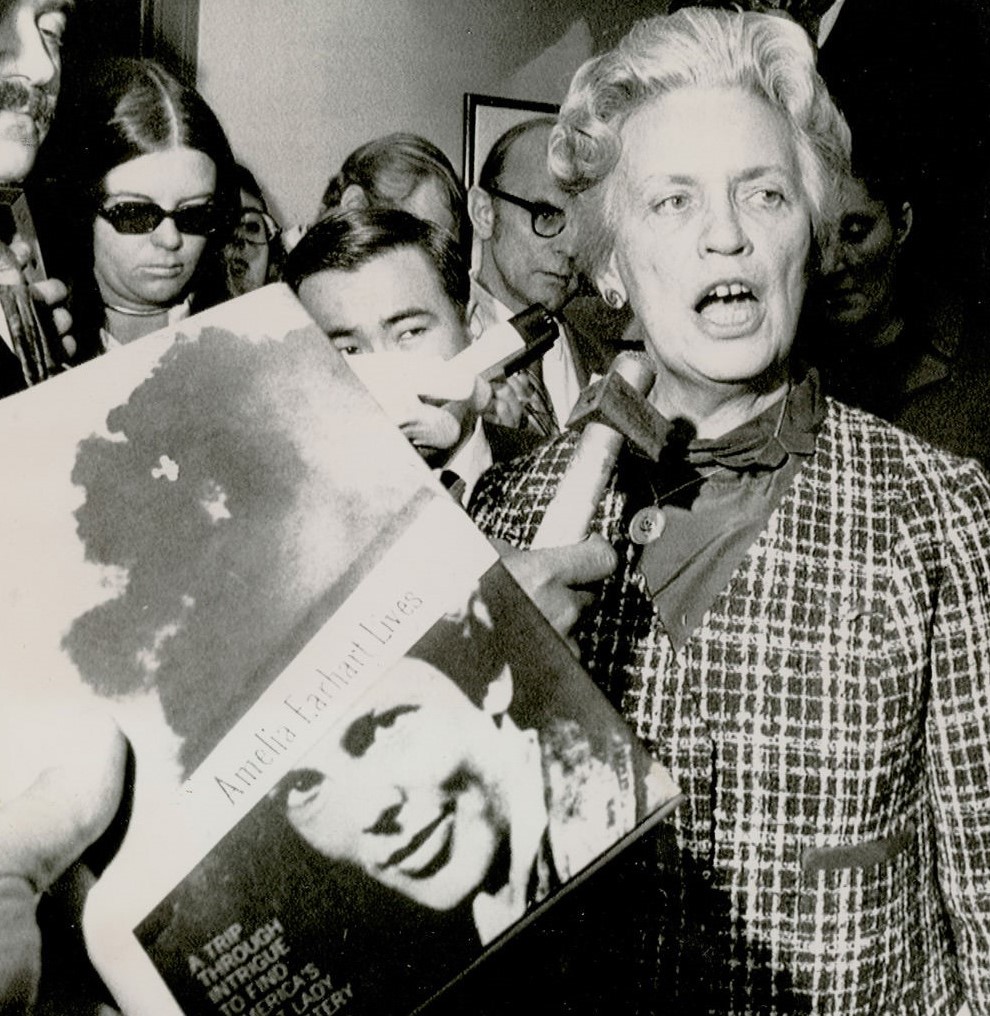I’m thrilled to announce the “launch” (if “launch” is indeed the right word) of my newest play, “The Last Flight of the Electra!”
Taking place in late 1968, “The Last Flight of the Electra” concerns the retired magazine executive Aileen Craigmore, who finds her carefully manicured (and well-protected) world turned upside down by an obsessive secretary, who insists that Craigmore is, in fact, Amelia Earhart, the famous aviatrix who went missing while flying over the Pacific Ocean in July of 1937.
A brisk-paced, full-length one-act, “The Last Flight of the Electra” is an exciting, even haunting play about the nature of identity – who we truly are and who we choose to be – and, indeed, the extent to which there is any difference between the two – requiring only a single unit set and a cast of five actors to bring its story to life.
The play is inspired by a real-life historical incident, encapsulated in the below picture:

The woman above is Irene Craigmile Bolam, who was famously (or infamously) “accused” of being Amelia Earhart in a book by Joe Klaas in 1970. Joe Klaas wrote his book inspired by former air force officer Joe Gervais, who became convinced that Irene Bolam – a retired bank executive, living in New Jersey – was actually the living, breathing Amelia Earhart. (Hopefully, most readers know that Amelia Earhart was a world-famous pilot who disappeared while flying over the Pacific in an around-the-world tour way back in July of 1937.) Gervais met Bolam in the early 1960’s at an event sponsored by The Early Flyers’ Club of Long Island (Bolam was a former aviatrix) and became convinced she was Amelia Earhart, secretly repatriated to the United States by the American government following World War II. Bolam subsequently sued the publisher of the book and pursued legal action against Klaas and Gervais, but withdrew the case eventually when a judge asked her to provide her finger prints for comparison with Amelia Earhart’s. This decision – and the fact that Bolam subsequently insisted she be cremated upon her death in 1982 – have kept the extraordinary claims by Klaas and Gervais, if not fully “alive,” at least in a state of labored breathing.
You can check out a synopsis of the play here!
